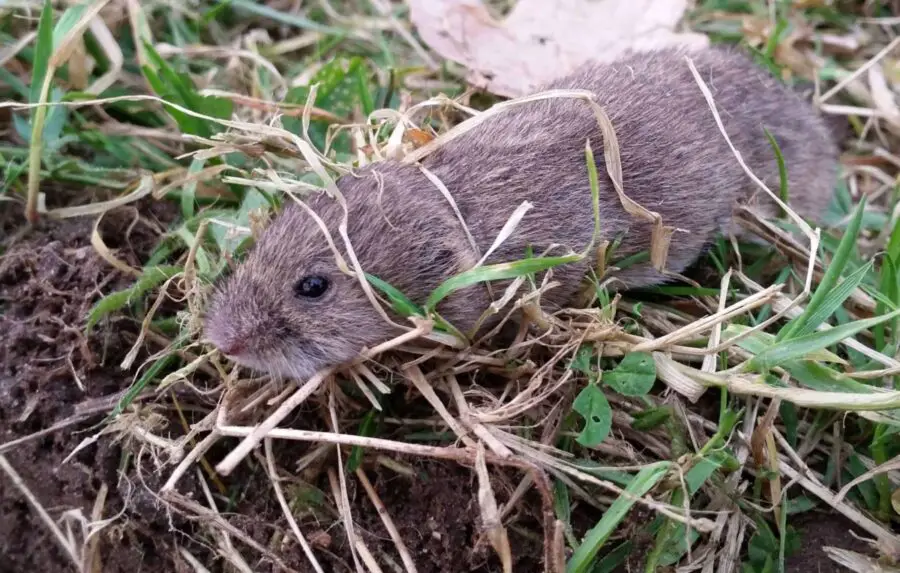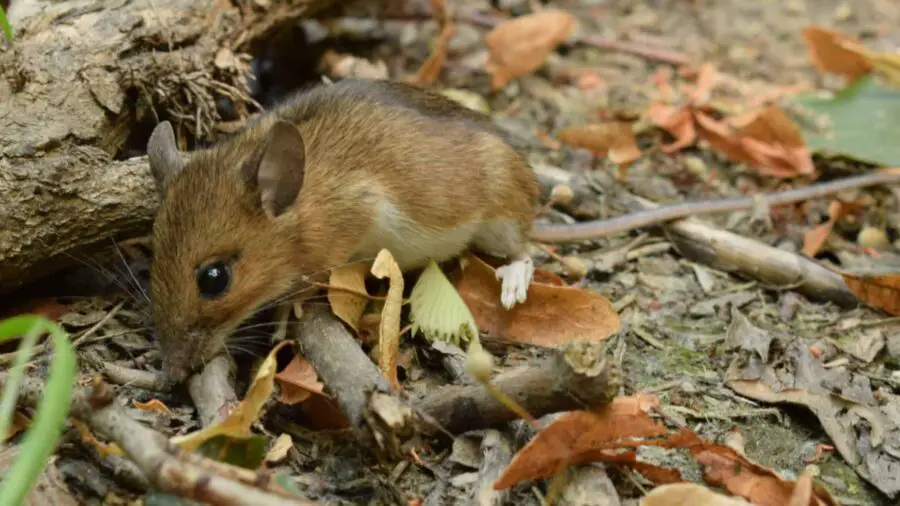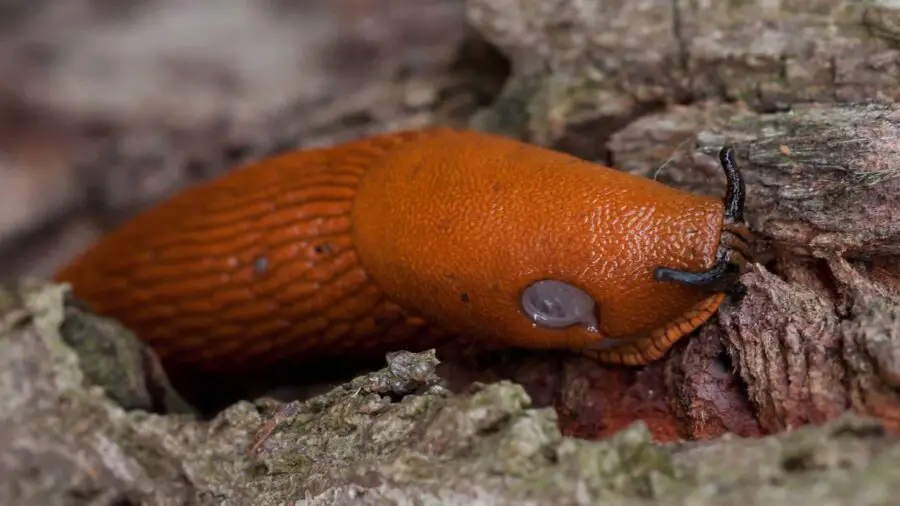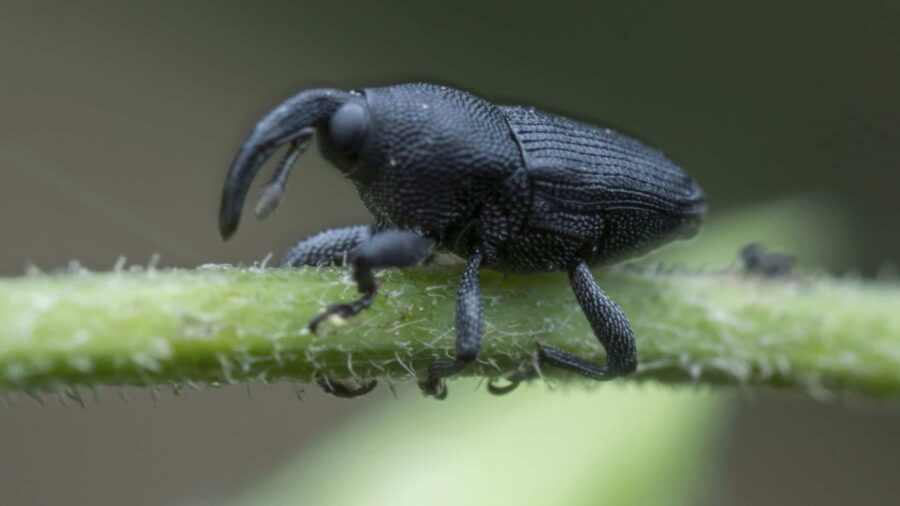Hostas not growing as expected. Do your hostas need a little extra help to reach their full potential? We’re here to offer solutions and help you find the best way forward.
This simple guide aims to explore the underlying reasons for poor hosta growth and offer practical solutions to effectively address these issues. By following the practical solutions outlined in this guide, you can enjoy thriving hostas in your garden.
Pests vs. Hostas: Unraveling the Hidden Culprits Behind slow or Stunted Growth
Pests can significantly impact hosta plants and impede their growth. Common culprits include voles, mice, snails, slugs, and black vine weevils.
These pests can cause damage to hosta roots, foliage, and flowers, leading to stunted growth or even plant mortality.
Battling the Underground Invaders: Voles and Their Devastating Impact on Hostas

Voles, belonging to the rodent family, are known to burrow underground, causing considerable damage to hosta roots. They’re usually a brown or greyish-brown, and they are between five and eight inches long.
Their activities expose the roots to fungal and bacterial infections, hampering the plant’s ability to thrive.
Mice: The Unexpected Threat to Your Hostas’ Prosperity

Mice are notorious for their affinity for hosta shoots and foliage. They can consume the tender parts of the plant, leading to stunted growth or even death.
There are mice everywhere, and they like to eat the crown of a hosta plant. They can eat the foliage right down to the ground.
Implementing strategies to deter mice from the garden or introducing natural predators like cats can help control their population.
Slimy Saboteurs: Snails and Slugs Targeting Hosta Leaves and Shoots

Nocturnal pests such as snails and slugs can wreak havoc on hostas. These voracious feeders devour hosta leaves, shoots, and flower buds, significantly hindering growth and beauty.
Regular inspections, handpicking, and deploying organic or synthetic slug and snail control measures can alleviate this issue.
Black Vine Weevils: How to Protect Your Hostas from these Leaf-Munching Menace

Black vine weevils pose a significant threat to hostas both indoors and outdoors. These pests feed on hosta leaves and roots, causing damage characterized by irregular patterns along the leaf edges.
Early morning vigilance and appropriate pesticide treatments can help manage black vine weevil populations effectively. You can find these sly creatures indoors as well as outdoors.
Taking Charge: Effective Strategies to Keep Pests Under Control and Your Hostas Flourishing
Introduce natural predators such as cats to the garden to minimize the population of mice and voles
Utilize suitable pesticides, either synthetic or organic, to combat snails, slugs, and black vine weevils. Organic options, such as food-grade Diatomaceous Earth or crushed eggshells, can provide effective control.
Attracting birds to the garden can offer a natural solution, as birds actively consume snails and slugs, helping to keep their populations in check.
Reasons Your Hostas Aren’t Growing—Improper Care
If you’re brand new to hosta care (and we’ve all been there), it’s very easy to not care for them properly and end up damaging or killing them by accident. This is especially true if you plan to winter them and it’s the first year you had them.
Again, you’ll have to narrow down what you did and didn’t do by yourself, but I’m going to highlight the most common mistakes people make when it comes to hosta care.
Water Woes: Finding the Right Balance for Optimal Hosta Growth

Hostas require consistent soil moisture, but overwatering can lead to root rot. The large leaves of hostas contribute to significant water loss, necessitating a balance in watering practices.
Generally, providing at least one inch of water per week is recommended. Avoid excessive watering before the first freeze to prevent water accumulation, which can harm the plants.
Signs of overwatering include yellowing leaves, wilting, browning along leaf edges, and root rot. Adjusting watering practices and ensuring proper drainage can aid in hosta recovery.
Drought Dilemma: How Insufficient Watering Can Impact Your Hostas’ Vitality
While hostas prefer consistently moist soil, they can tolerate temporary drought conditions. However, prolonged insufficient watering can result in plant decline and dry rot.
Regularly assess soil moisture, particularly during hot and dry periods or in arid climates. Adjust watering practices accordingly, ensuring the soil feels consistently damp but not waterlogged.
Applying a layer of mulch around the plants can help retain moisture, providing some buffer against occasional lapses in watering.
Winter Survival Guide: Shielding Your Hostas from Extreme Temperature Fluctuations
Hostas can be adversely affected by rapid temperature fluctuations during their dormant period in winter.
Such fluctuations can trigger premature sprouting, leaving the plants vulnerable to subsequent freezing cycles. Applying a thick layer of mulch around the plants can help minimize temperature variations.
Alternatively, if feasible, consider transferring potted hostas indoors or burying them underground for added protection against extreme temperature fluctuations.
Division Dilemma: Unveiling the Effects of Hosta Division on Growth Patterns
While not technically improper care, dividing larger hostas into smaller plants can temporarily slow down their growth in the following spring. Newly emerged shoots may be delayed, and subsequent growth may proceed at a slower pace.
To mitigate this issue, opt for larger divisions that include multiple growths. Furthermore, refrain from dividing hostas late in the growing season, allowing them ample time to establish themselves before entering dormancy.
Hostas not growing? Pests like voles, mice, snails, slugs, and black vine weevils may damage roots and foliage. Improper watering, temperature fluctuations, and division can hinder growth. Control pests, adjust watering, protect from temperature changes to nurture healthy hostas.
Frequently Asked Questions
How Long Does It Take for Hosta Bulbs to Emerge
Hosta bulbs require a prolonged period of temperatures of 35 degrees Fahrenheit or lower for 6 to 10 consecutive weeks during winter. Once these conditions are met, the hostas will start to emerge in spring when soil temperatures are at least 40 degrees Fahrenheit for a couple of weeks. Some cultivars are fast to emerge, and others need more time.
Why Are My Hostas so Small This Year
Several factors can contribute to smaller hosta growth. Insufficient watering, particularly during periods of drought, can stunt their growth. Additionally, inadequate nutrition due to poor soil quality or competing with tree roots can hamper hosta growth.
Closing Thoughts
When faced with hostas that fail to thrive, it is crucial to identify the underlying causes and take proactive measures to address them.
Whether it’s managing pest infestations, adjusting watering practices, mitigating extreme temperature fluctuations, or considering proper division techniques, understanding these factors empowers gardeners to nurture robust and flourishing hosta plants.
By applying the recommended strategies, enthusiasts can create an optimal environment for hostas to thrive and enjoy their captivating beauty.